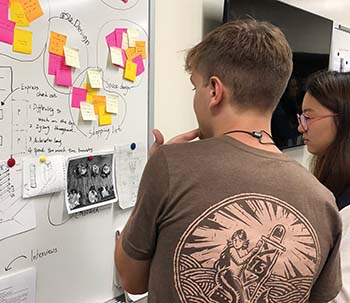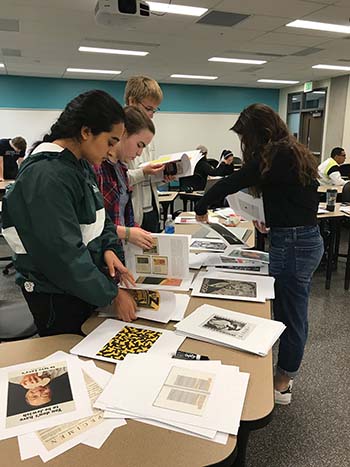Integrated learning-in-context curriculum
Students learn more readily when courses have an understood purpose, when new concepts are introduced at the right time within a context to which students can naturally relate, and when learning outcomes are tied to practical experiences.
Teaching in this integrated way not only improves student learning of a particular subject, but it helps students understand how subjects and classes work together and prepares them for the real world – where the workday is not divided into single skills or activities.
Horizontal and vertical integration are key
A traditional curriculum often uses a series of individual, stand-alone courses. They may have pre-requisite relationships, but these siloed courses rarely have tangible connections with one another during the semester.
The transformation of the Polytechnic includes use of horizontally and vertically integrated curricula to break down the silo effect of individual courses and to provide thoughtful integration. This enables students to learn one subject matter within the context of another.
Horizontal integration: Courses across a particular semester or year teach and reinforce similar skills and concepts. In the School of Construction Management Technology (CMT), for example, core skills in safety, estimating and scheduling naturally reoccur across multiple courses and projects in a single year of study. Integrating these key skills reinforces them to the point they become automatic and intuitive.
Vertical integration: Each year of a student’s Polytechnic experience builds on the foundation of information and skills learned during the previous year. CMT has vertically integrated a 16-week estimating class as two topics in a student’s first year, two in sophomore year, and so on. The student builds learning on top of learning throughout four years of study, creating a more proficient graduate.
One-of-a-kind design program
User experience design – also known as UX design, a major in the Department of Computer Graphics Technology (CGT) – is the first comprehensive undergraduate UX program in the United States. It’s an approach to creating products, systems and services that places the user at the center of the design process, ensuring that technologies are effective and enjoyable to use. Developed during the college’s transformation, CGT created the UX design program using an integrated, learning-in-context curriculum from the outset.
“We built it from scratch,” said Colin Gray, assistant professor of computer graphics technology. “Learning in an integrated fashion is fundamental to our UX design program.”
Choreographed learning
CGT faculty build the UX program around two kinds of courses: Learning Studios and Experience Studios.
In UX’s Learning Studios, same-year students get hands-on experience conducting user research, framing problems, and creating and evaluating prototypes. Essentially, multiple courses and disciplinary experiences are integrated through the Learning Studio.
I liked working in teams in which other students had more experience. They were role models, and I learned from them. Now, as a senior and a team leader, it’s great to work with first- and second-year students. At the beginning of a project, our team is off balance — but I am able to help them understand and apply techniques that are new to them. When we’re working on user research and design, the whole team benefits from having a diverse group with different backgrounds and skills.
- PATRICIA MATA
senior, user experience design
“We have carefully choreographed the introduction of new skills to students,” Gray said. “We want first-year students to engage with the whole UX design process immediately, so we give them challenging projects that require a range of coordinated skills.”
In these projects, students conduct user research, create wireframes for new products, and conduct various forms of evaluation and testing.
“They have to learn the component skills of research, prototyping and testing only days before implementing them,” said Gray. “Most students experience what we call ‘productive failure’ during the design challenge. It helps them learn that design isn’t about getting the right answer, but rather about making sure you practice the process. We’re a process-focused program.”
In Experience Studios, students work in cross-cohort teams on semester-long projects for real industry partners.
“There’s a pragmatism to working in teams with students who may be two or three years ahead of you or behind you,” said Nancy Rasche, assistant professor of practice. “It provides a vertical integration in their learning environment that matches what they’ll find on the job. The projects they do in the Experience Studios will also deepen the core skills they learned in earlier semesters.”
All indications point to the successful transformation of the Polytechnic.
With a focus on innovative learning methods, hands-on experiences and industry partnerships, these 10 Elements of Transformation drive the Polytechnic Institute’s dedication to impactful technology education.



